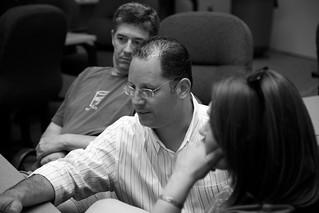Isadore Singer: ... when I try out my ideas, I’m wrong 99% of the time. I learn from that and from studying the ideas, techniques, and procedures of successful methods. My stubbornness wastes lots of time and energy. But on the rare occasion when my internal sense of mathematics is right, I’ve done something different.
Another quote:
Michael Atiyah: My fundamental approach to doing research is always to ask questions. You ask “Why is this true?” when there is something mysterious or if a proof seems very complicated. I used to say — as a kind of joke — that the best ideas come to you during a bad lecture. If somebody gives a terrible lecture — it may be a beautiful result but with terrible proofs — you spend your time trying to find better ones; you do not listen to the lecture. It is all about asking questions — you simply have to have an inquisitive mind! Out of ten questions, nine will lead nowhere, and one leads to something productive. You constantly have to be inquisitive and be prepared to go in any direction. If you go in new directions, then you have to learn new material.
The full interview is right here.
These are two things I find myself constantly belabouring in my classes when teaching problem solving:
- »Take risks! Experiment, play, try something out and see where it takes you. Good math isn't knowing what to do with any problem -- good math is knowing what to do when you don't know what to do. ;-)
- »Ask questions! If you don't ask questions then I can't tell whether you understand or not. I'll either go on to something new, leaving you confused in the dust, or go over and over something you already understand trying to help you but really just wasting our time.
I'm going to cross post this one on all my classroom blogs. ;-)
- 10/30/2005 09:03:00 pm
- 0 Comments





